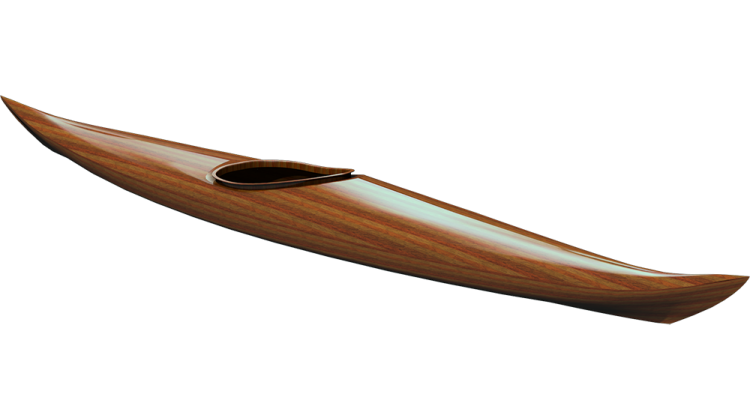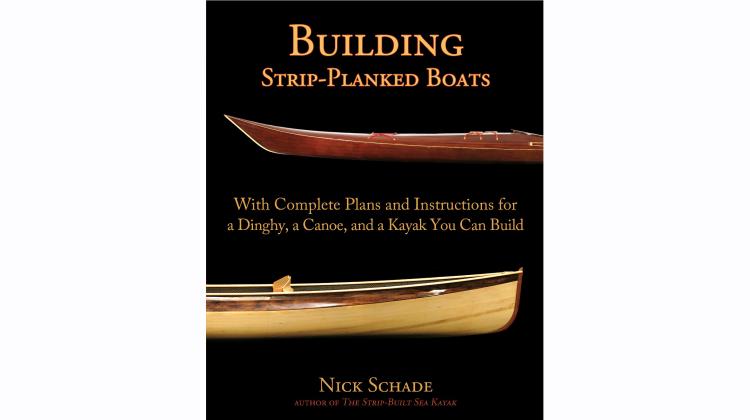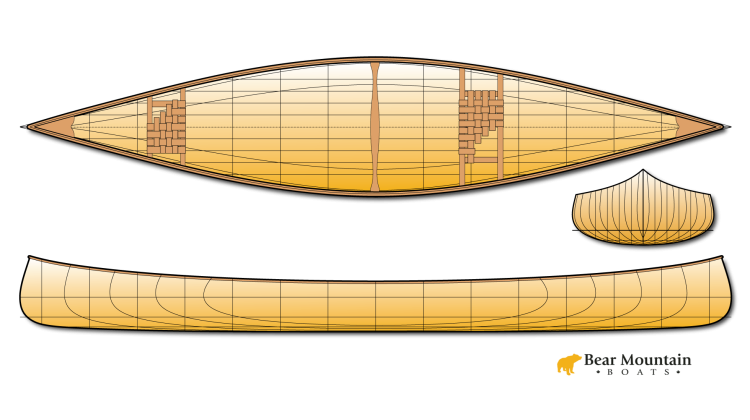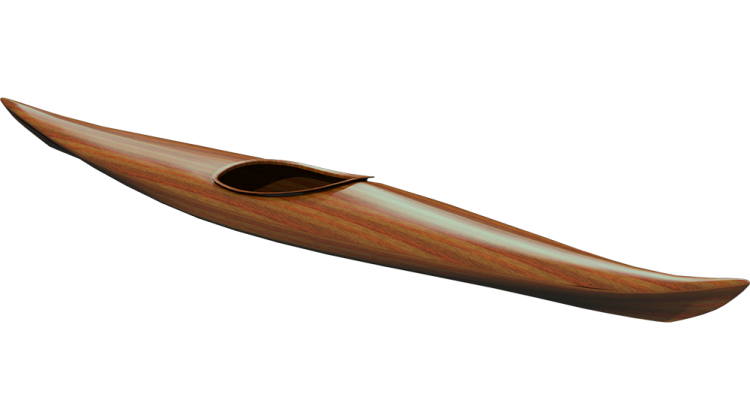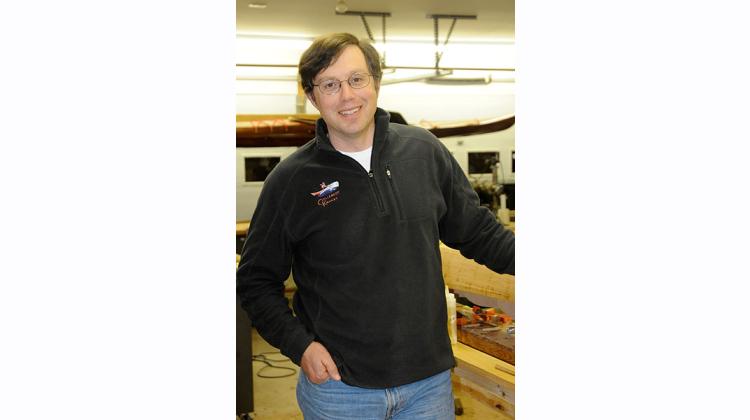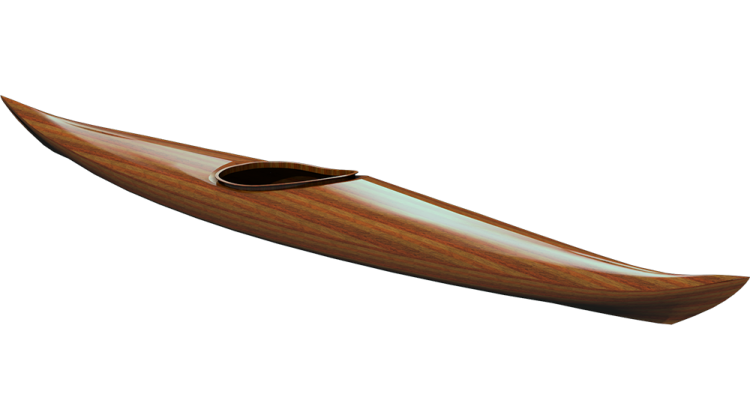This is the introduction to my series of videos documenting my building of a strip built Petrel Play. In this episode I describe the design, how I came up with it and what makes it special.
Transcript:
Hello, I’m Nick Schade, owner of Guillemot Kayaks. I specialize in getting people into high performance hand crafted wooden kayaks. I design kayaks and other small boat, drawing on my 40 years of experience taking small craft out onto big water to create exceptional boats.
This is the first video in a series documenting my process of converting the idea of a new kayak into a physical vessel and taking it out on to the water. I will be building my “Petrel Play” design.
I hope you will find this series inspirational and maybe even decide to build your own small boat. The plans for this kayak and others like it are available at Guillemot-Kayaks.com, but the information provided in this series should be applicable to a wide variety of boats and designs.
The boatbuilding technique shown in these videos is called “strip-building.” This process involves take narrow, thin strips of wood, bending them around a form and gluing them together. Once the forms are completely covered with the wood strips the surface is smoothed and then covered with fiberglass cloth. This cloth is adhered to the wood with epoxy resin. This makes the wood shell strong enough to be removed from the forms. The interior is then smoothed and further reinforced with more fiberglass.
Various parts are added while the deck and hull are separate. The boat is then reassembled and after further sanding is ready for finish.
This makes it all sound very simple, and in a sense it is. The process is a sequence of accessible steps that anyone with the desire to take on the project can reasonably expect to perform successfully. Building a kayak using this technique can be done by a beginning boat builder without any experience in woodworking.
That said, it does take some patience. As you will see while watching the following videos, there are a lot of individual steps. This is not instant boatbuilding. This is a project you choose because the project itself is appealing to you.
Before we dive into the actual process of making the Petrel Play kayak, I would like to introduce you to the design and give you some background into how I came up with the design of the Petrel Play and what it is designed to do.
The Petrel Play is a 14-foot-long by 23-inch-wide kayak suitable for easy paddling on a small lake or bay but it is also a lot of fun out on the open ocean in big waves and surf.
I first started thinking about this design around 2004. At that time, I was developing my original Petrel design. I was waffling between a long, narrow traditional sea kayak, and a shorter, wider touring or cross over design. A short, wide kayak tends to be more maneuverable and easier to handle, but long and narrow will usually be faster.
Any boat design is based on a series of choices and balancing various compromises. As I worked on the Petrel design I sketched up long designs and played around with shorter designs. I ended up settling on a 17-foot-long by 20-inch-wide design that served my needs of traversing long distances efficiently while still be responsive for playing in tide races and surfing on storm waves.
Creating a new kayak is a process of iterating on earlier ideas. While working on Petrel design I took off from my Night Heron design which incorporates Greenland Inuit kayak influences, these are combined with modern sailboat ideas, and concepts borrowed from other contemporary kayak designers.
The Petrel includes a transitioning chine. The “chine” is the area on the hull where the side becomes the bottom. This can be a sharp or hard angle, or a rounded or soft curve. On the Petrel the chine starts out rounded at the front and becomes hard behind the cockpit. The hard chine in back creates a control surface for surfing while keeping bow looser so it is less likely to lock-in on waves.
The overall hull shape has fullness out into the ends giving it a high effective waterline length for good efficiency and it also bolsters the stability of an otherwise narrow kayak.
The Petrel is one of my favorite boats, but when I wanted to adapt it to stitch and glue construction, I thought I should also revisit my desire for a shorter, wider version.
While longer boats are capable of moving faster through the water, at the speeds most people typically paddle there is very little efficiency benefit in going longer than about 14 feet.
Any longer than that requires the paddler be quite strong to gain an advantage and even then the benefit will primarily occur only if you are pushing the kayak hard. Moving at a comfortable cruising speed, a shorter design will often be easier to paddle due to less wetted surface area and having less boat sticking out in front and behind can just be easier to handle.
Stitch and glue is another technique for building small boats and has the advantage of being quicker than strip building. By building with accurately cut plywood panels I would be able to build a 14-foot-long version of the Petrel at the same time I built a 17-foot version.
Making a design shorter has consequences. It reduces the volume so the kayak will not carry as heavy a load. Making it wider and a bit taller recovers much of the lost volume. In adapting the longer Petrel to create the Petrel Play I added some width, made the cockpit a bit deeper and I also reduced the amount of overhang. Going with a more plumb bow and stern shape allowed me to maximize the waterline length, giving as much speed potential as possible.
The stitch and glue method is very well suited to creating hard chined designs it requires a little bit of finesse to simulate the transitional chine toward the front. The addition of an extra panel allows for a pretty good approximation.
I am really pleased with the stitch and glue version of the Petrel Play (or Petrel Play SG). It is plenty fast enough to keep pace with 18’ sea kayaks and is very quick and responsive playing in tide races.
The short length makes it easier for my wife to handle and the added width provides a bit of additional stability making it very comfortable in conditions.
While I really like the Petrel Play SG, I personally like strip-built designs better. I think they look better and the narrow strips offer more design freedom than the plywood panels. I really wanted to get back to the strip-planked idea I had years ago.
I was finally able to fit the project into my schedule last year primarily by finding a customer who wanted me to make him a strip-built Petrel Play.
Let’s take a look at exactly what this design has going for it:
Again, the design is 14 feet long, and with the plumb bow and stern, the waterline length is just about full length. The boat is fast, in sea trials my friends and I were able to sprint the Petrel Play SG up to 8, nearly 9 miles per hour (That’s over 7 knots or around 13 kilometers per hour). Obviously, this is a sprint and can’t be sustained for long, but the design cruises along nicely at 4 mph.
At 23 inches wide with a fair amount of flare, the design is quite stable with good initial and secondary stability. The flare continues up to the bow providing reserve buoyancy.
Like the Petrel, the Petrel Play has the transitional chine that hardens up behind the cockpit. I took a lot of inspiration from the old Mariner “Coaster” designed by the Broze brothers. With a slight lean, leaning into the side flare, you can turn the boat very quickly.
The cockpit is recessed at the back to stay out of the way when leaning back which allows for easier rolling for those who wish to learn. The flat area on either side of the front of the coaming provides a comfortable place to brace your thighs, and knee braces can be incorporated if you want extra support.
The cockpit shape provides plenty of room for your legs. The feature line or chine extending forward is placed to maximize room where you need it without creating an overly high deck that would catch the wind.
Below the feature line the deck slopes away creating a narrow catch area for your paddle so you don’t have reach out too far to the side allowing for a relaxed, comfortable and efficient paddling posture.
That feature line continues forward to where your feet are, providing plenty of room for paddling booties.
A high bow cuts cleanly through waves and then drops down to minimize windage creating a graceful profile.
My customer wanted a retractable skeg. While not strictly necessary, it provides a nice additional dimension of control. With the skeg deployed the Petrel Play tracks nice and straight, retracted it is lively and maneuverable.
The finished weight of the boat is about 31 pounds (~14kg). This light weight translates into a spritely and responsive kayak that is easy to carry to the launch. Despite its lightweight I have found strip built boats to be very durable and tough. I don’t baby my personal kayaks and they absorb a lot of abuse.
I am very pleased with this design and think a lot of other people will enjoy it as well. If you want to do relaxed paddling in sheltered conditions, the lightweight, 14-foot length and comfortable stability will be a lot of fun. Personally, I like going out in rough, active waters and I can say the Petrel Play is a hoot.
In the next video in this series I will start milling the wood to make the kayak, I’ll cut out the building forms and set them up. I hope to release a new video every week or so, but if you want to be kept up to date on the progress, please subscribe to my YouTube channel via the link provided. Also, if you are interested in building Petrel Play or another kayak yourself, follow the link to my website where you will find plans and instruction books.
Thanks for your interest, I hope you enjoy this series, and happy paddling.

